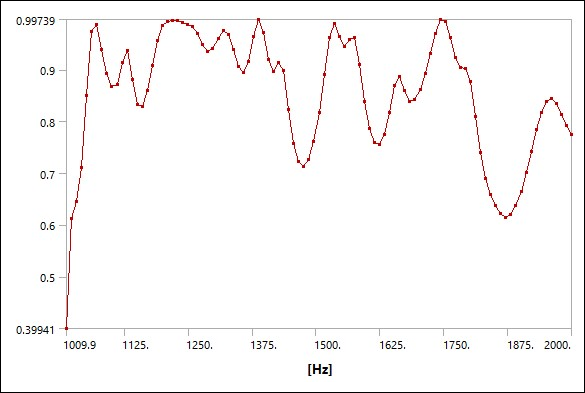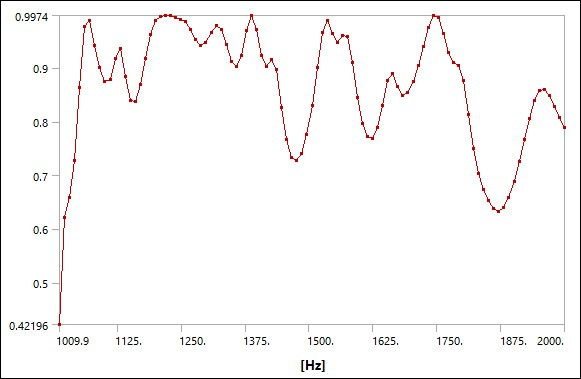The performance of a sound absorbing resonator is determined by the amount of sound energy that it absorbs. A perfect resonator would have a constant absorption coefficient of 1 over the frequency range, meaning that all noise entering the system is absorbed.
The Absorption Coefficient of both the system is plotted using the Port defined on the face where the Surface Velocity was applied.
To analyze the absorption coefficient, the boundary layer impedance (BLI) and low reduced frequency (LRF) models are compared, as shown in the following figures:
Both models give close results. The results show that (except for a lower initial absorption at 1000 Hz) this resonator is efficient, as the absorption coefficient is close to 1 over most of the frequency range.
This example demonstrates capabilities for solving viscothermal acoustics problems, which are widely used in the design of acoustic devices and MEMS applications including hearing aids.




